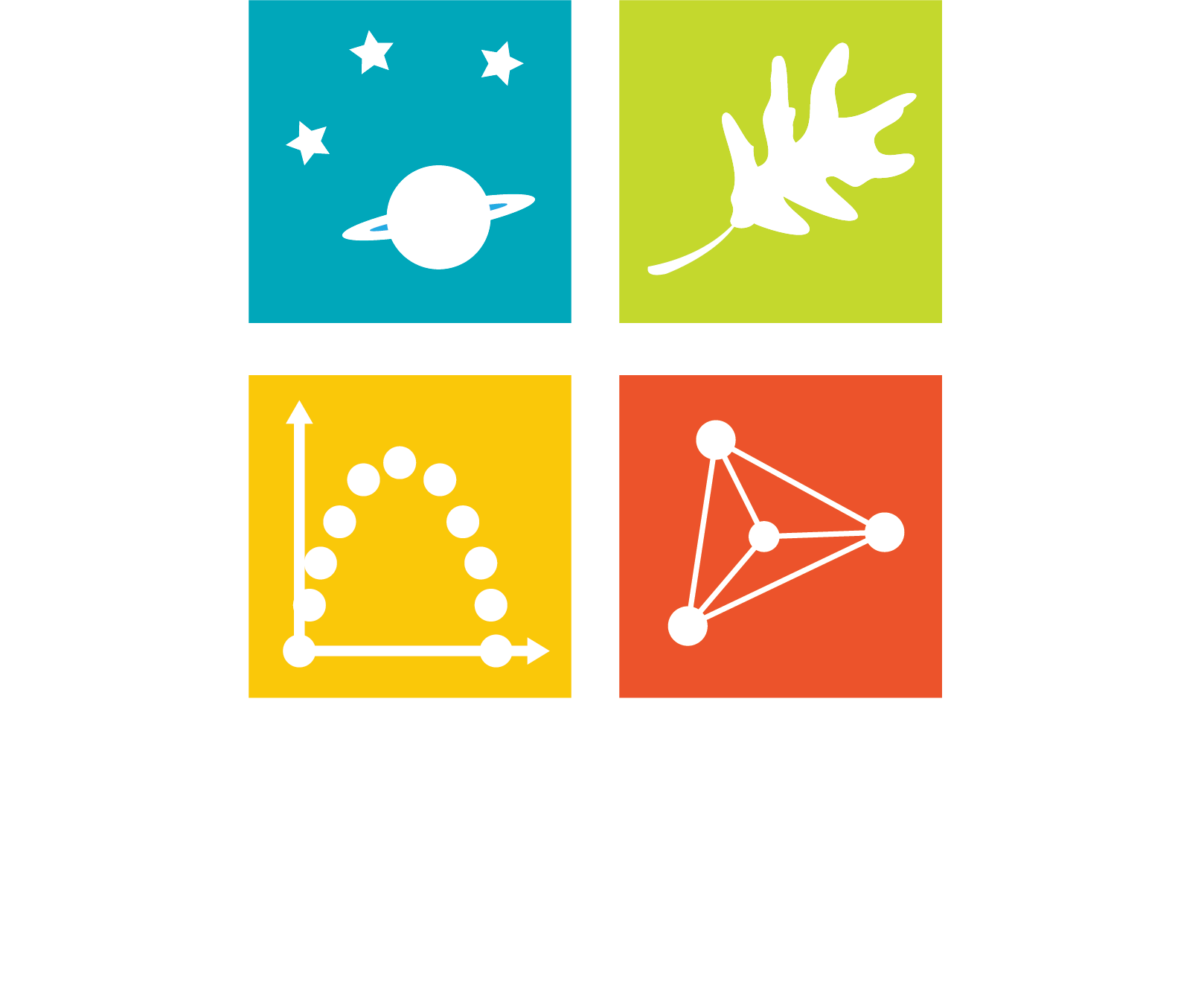NoCo Science Education Blog: Creating Student Researchers with Dr. Paul Strode
By Victoria Jordan
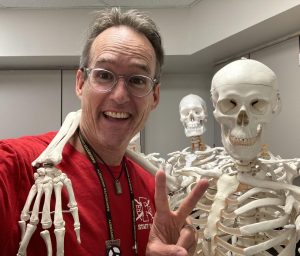
“We tried hard to understand the Faraday reaction in this journal article, but we aren’t sure how that affects how much the system will reduce nitrogen oxides in diesel emissions,” explains Anna Kumar and Lucia Noel to an attentive classroom of fellow high school students. “We want to find a way to change everyday materials to make them more efficient and eco-friendly.”
Questions abound following the students’ presentation of a scientific paper to their classmates.
“What are the big take-aways from this paper that will assist you in your research?”
“Is there an environmental aspect of this research that could have a negative future impact?”
“Why are there three Y-axes on the graph?”
“What was it like for you to try to understand this paper?”
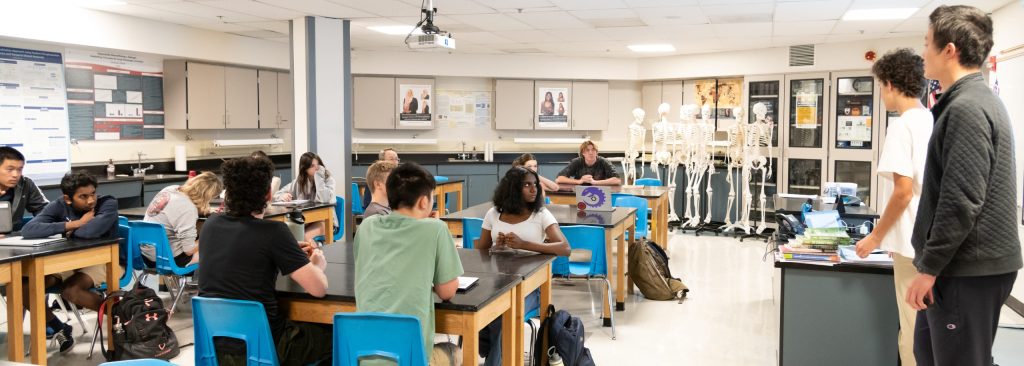
Students in Dr. Paul Strode’s Science Research Seminar (SRS) class are learning how to become scientists and engineers in their own right. Dr. Strode explains, “Fundamental knowledge needs to be understood, but for success in research you must learn specific techniques, targeted concepts, and explicit details about your topic that are not part of a regular curriculum. I don’t think my students fully grasp how ‘not normal’ this class is!”
Dr. Paul Strode earned his teaching license in Indiana while majoring in biochemistry at the small college in the town where he grew up. He taught high school near Seattle, Washington, for several years before moving to Illinois for his Ph.D. in Ecology and Environmental Science at the University of Illinois in Champaign-Urbana. In 2004 he and his wife, Dr. Sarah Zerwin, and their then 1-year-old daughter, Jane, moved to Boulder, Colorado, for her Ph.D. in English Education. Paul and Sarah now both teach at Fairview High School in South Boulder! In all of his biology classes, but especially SRS, Paul’s goal is for his students to learn to think, talk, and write like real scientists. “If they internalize that, when they talk about their projects to others, they will be understood, and they will be on their way to a future STEM career.”
Let’s see how Paul makes this happen!
Think Like a Scientist
Paul engages students by figuring out what makes them curious about the natural world. “I meet the students coming into next year’s class in May before school lets out for the summer. I give them an assignment to explore science topics over the summer to hone in on their interests. They each pick a non-fiction science book to read over the summer. Then, we have a book talk in September when school resumes, and they get to hear about more topics than perhaps they explored on their own.”
Thinking like a scientist involves understanding process and product. To that end, Paul doesn’t use a textbook in his classes. Instead, he pulls current scientific journal articles, and has students dive into them. They study the methods and materials used in the papers, digging through the technical writing to find details about the process of conducting research. They also compare a variety of papers from different journals on the same topic to answer the question, “What are common elements of the scientific process?”
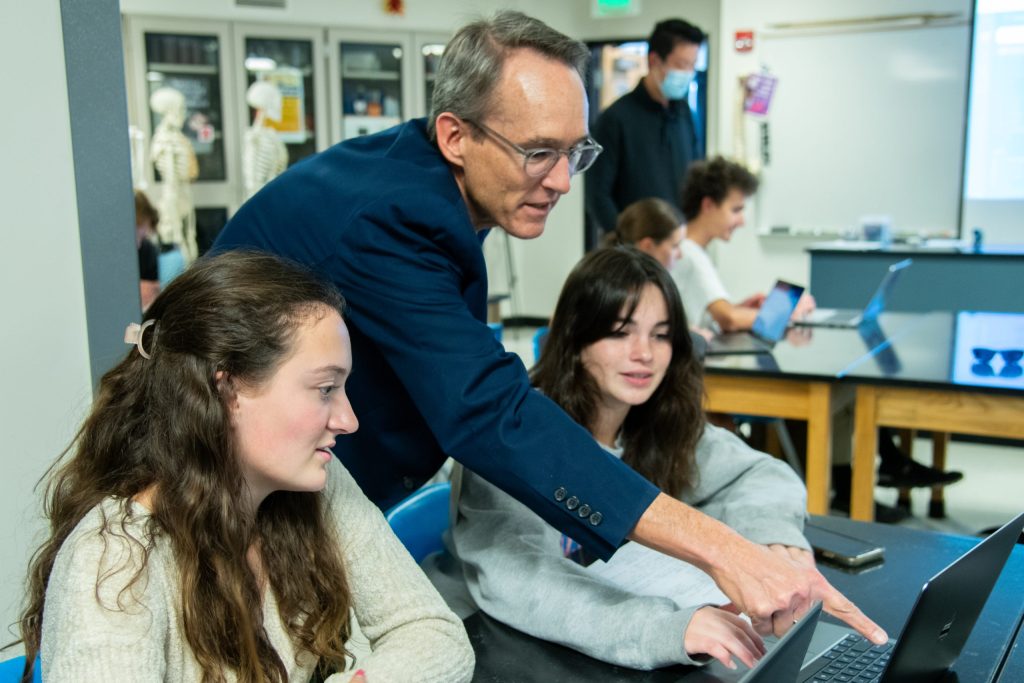
Data and error analysis skills are essential in science so Paul breaks the class into 4 teams. Each team is given a research paper that uses a different statistical analysis technique; for example: t-Test, ANOVA, or correlation and regression. Students work together to learn the tests and then teach them to their classmates. “Making sense of data allows his students to not only practice science authentically, but also allows them to become constructive, concerned, and reflective citizens,” Paul says. To help with data analysis he has written a 70-page guide for high school students on statistical analysis called, Making Sense of Data: A Statistics Survival Guide.
Talk Like a Scientist
Teaching students how to think like a scientist is challenging. In the process, they begin to understand how to talk like scientists because they are using journal articles with partners and teams and discussing scientific processes and products. Then, they present their findings to the class while receiving real-time feedback from Paul and their classmates.
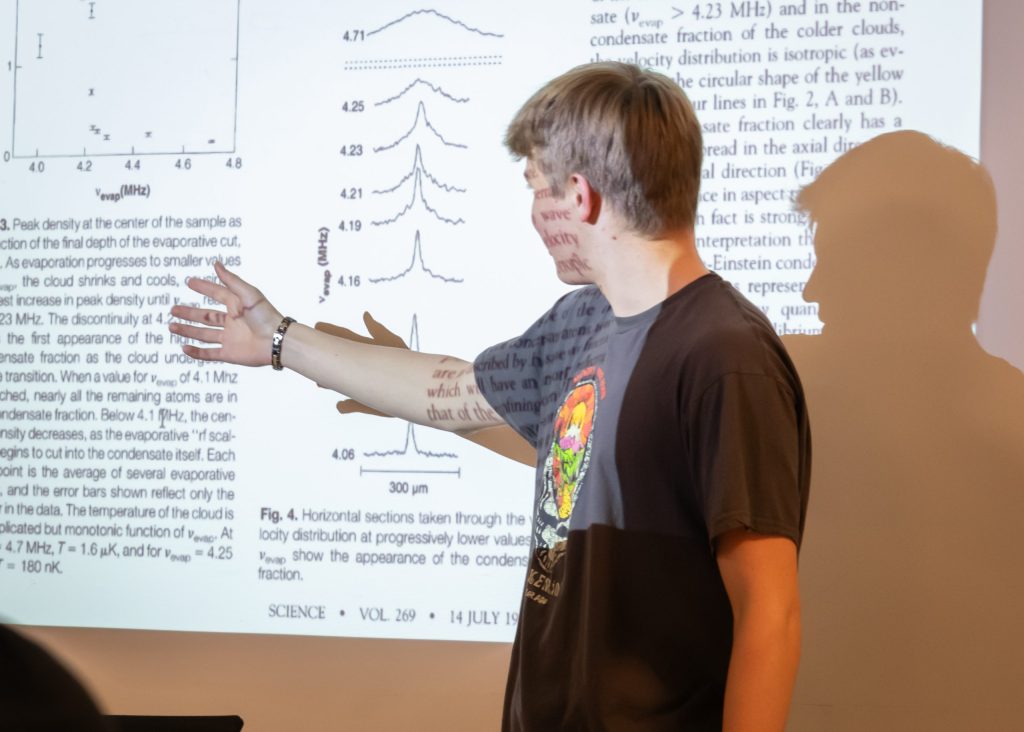
Scaffolding the learning is key. At first, students are daunted by the technical writing in journals. As they dissect each article, however, they build confidence and begin to see patterns. Paul brings in guest speakers who are professional scientists and engineers and also former students who are pursuing degrees in STEM, and the students experience how scientists talk about their research. Listening to real experts is inspiring because of their enthusiam for their subjects is contagious!
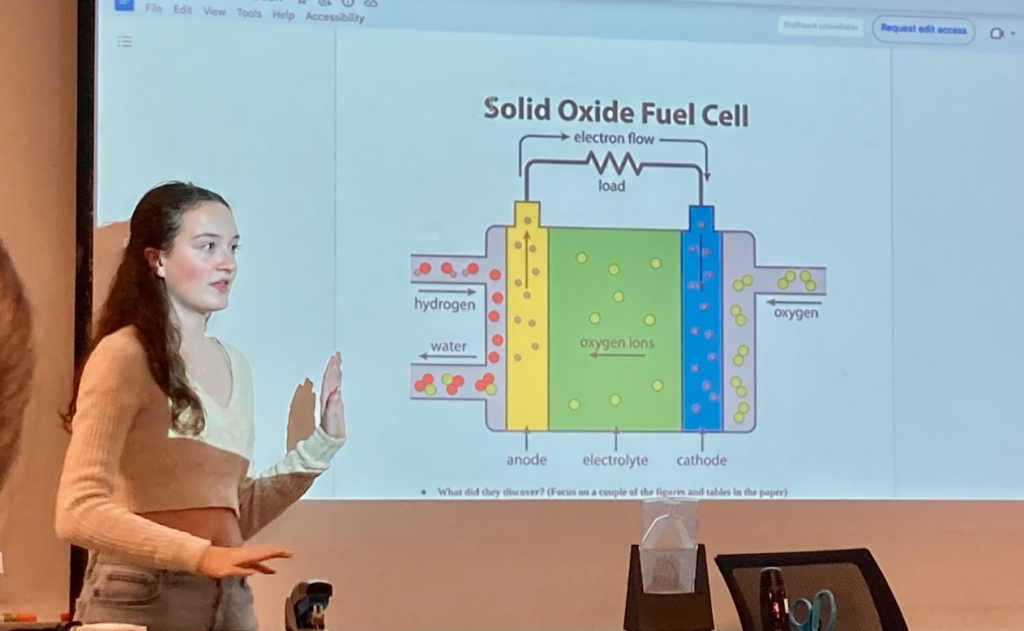
Write Like a Scientist
“The high school lab report does not exist in STEM fields,” Paul laments. “Is it necessary for students to write so many lab reports in their class for an audience of one, the teacher? Instead, students could be spending their time writing research questions that can be tested, differentiating between predictions and hypotheses, designing their own experiments, keeping a science journal, analyzing data, and maybe writing two technical papers styled after professional journal articles.”
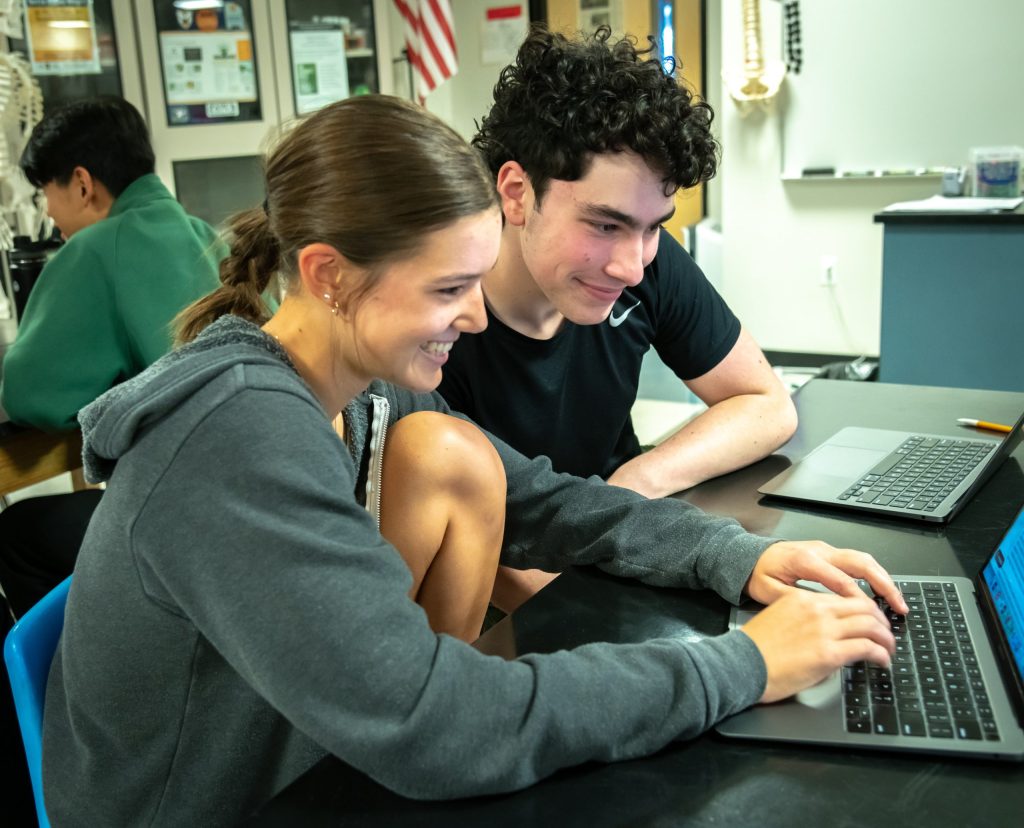
Early in the semester in his Science Research Seminar class, students have narrowed down their research topic, and work to generate testable questions, create hypotheses, and begin to think about experiments. At each step, they write as though they are submitting their research to be published in a journal. Throughout this process, students contact scientists and engineers that might be willing to serve as a mentor. Many of the potential mentors have worked with Paul’s students in the past and have learned to trust that Paul has prepared the students to think, talk, and write like scientists, and the students are eager to begin.
Dr. Ryan Langendorf is one such mentor. He has been working with Paul’s students since 2014, and says, “Mentoring gives me such hope for our future. These young people develop fun projects that allow me to grow through collaborative discovery! Paul has an insane amount of success with his students. He maintains his composure through challenges and is relentlessly calm. I wish there were more Pauls out there!”
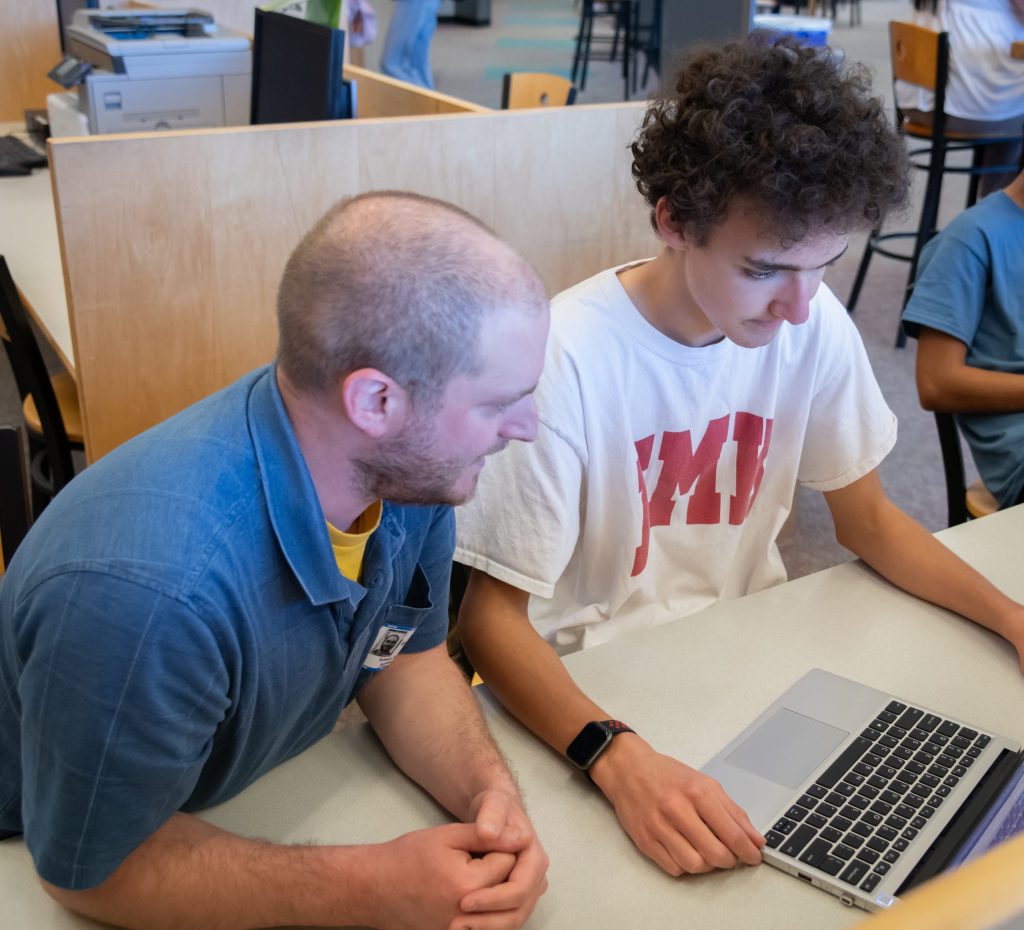
Paul stresses to his students, “If you can’t write in science, it doesn’t matter what you’ve discovered or what new knowledge you have to share; no one will publish it!” Paul spends hours giving feedback on writing, coaching students through problems, and helping them find resources. One of the most unique aspects of Paul’s class is that the students conduct their research on their own time, not during class. Class time is for honing their scientific communication skills. “Often the most difficult thing for students to write is their introduction because it requires them to weave together numerous previously published facts and ideas about how the natural world works. The students must be creative and hook the reader while being concise. By the time they are writing their technical papers, they have seen so many professional papers that they can model their writing off of others.”
Results
Paul’s students have many outlets for publishing their research to an audience that goes beyond the single classroom teacher. All of them submit their research to Regional and State Science and Engineering Fairs. Some students choose to submit their work to the national Journal of Emerging Investigators. And, at the end of the school year, they present their work at a symposium that Paul and his colleagues at several other District high schools organize. There students share their research with other high school students, teachers, and parents. Paul also has recently started publishing a Fairview High School Journal of Science Research as well, and includes all the students’ research papers professionally formatted to honor their year of dedicated research.
“The students’ research projects are not for an audience of one, the teacher. Everything they do is for a bigger audience, whether it be presenting to their peers or to judges at the Science and Engineering Fair. The end goal is not a grade for the class or even a ribbon. The end goal is much bigger: self-fulfillment and authentic experience in science,” Paul explains.
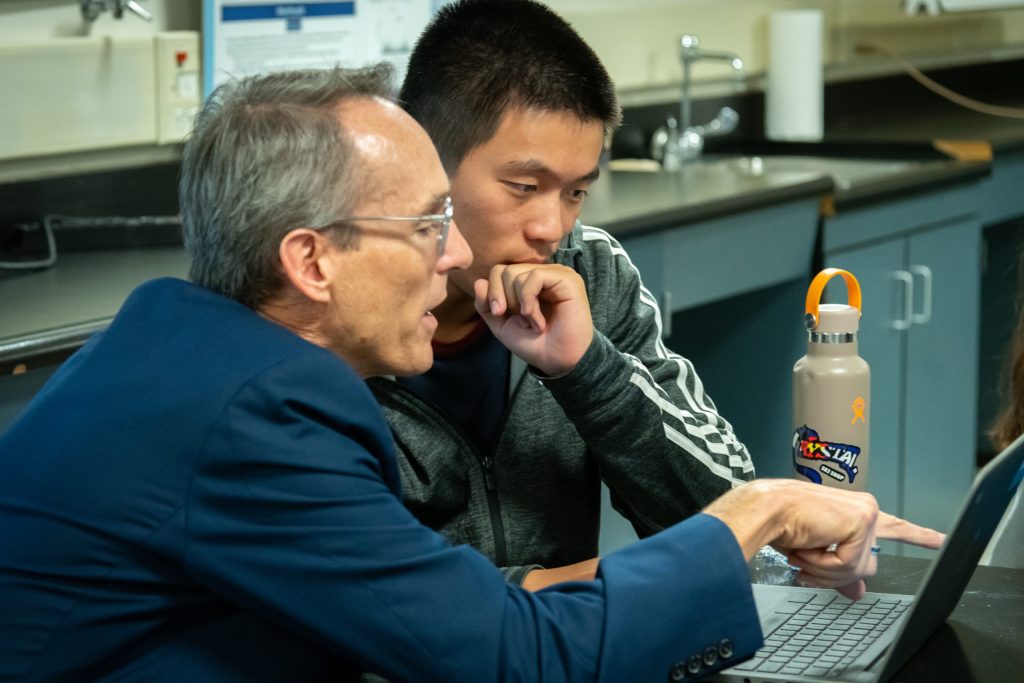
Over the years, Paul’s students have received top awards at their Regional Science and Engineering Fair and also at the state’s Colorado Science and Engineering Fair (CSEF) run by the Natural Sciences Education and Outreach Center at Colorado State University. Many of his students have had the highest honor of presenting their work at the International Science and Engineering Fair (ISEF). He is proud of the continued work that many of these students are doing. Many people are surprised at the types of research his high school students are doing in chemistry, physics, biology, microbiology, geology, engineering, and environmental science. “When students are motivated and interested in something, we can help them work on the fundamentals, but then we need to just get out of their way!” he claims.
“Logan Collins entered the science fair every year in high school and took the SRS class three times in a row. As a junior his project was awarded Best in Show at both the Regional and State Science and Engineering Fairs and Best in Category at ISEF.”
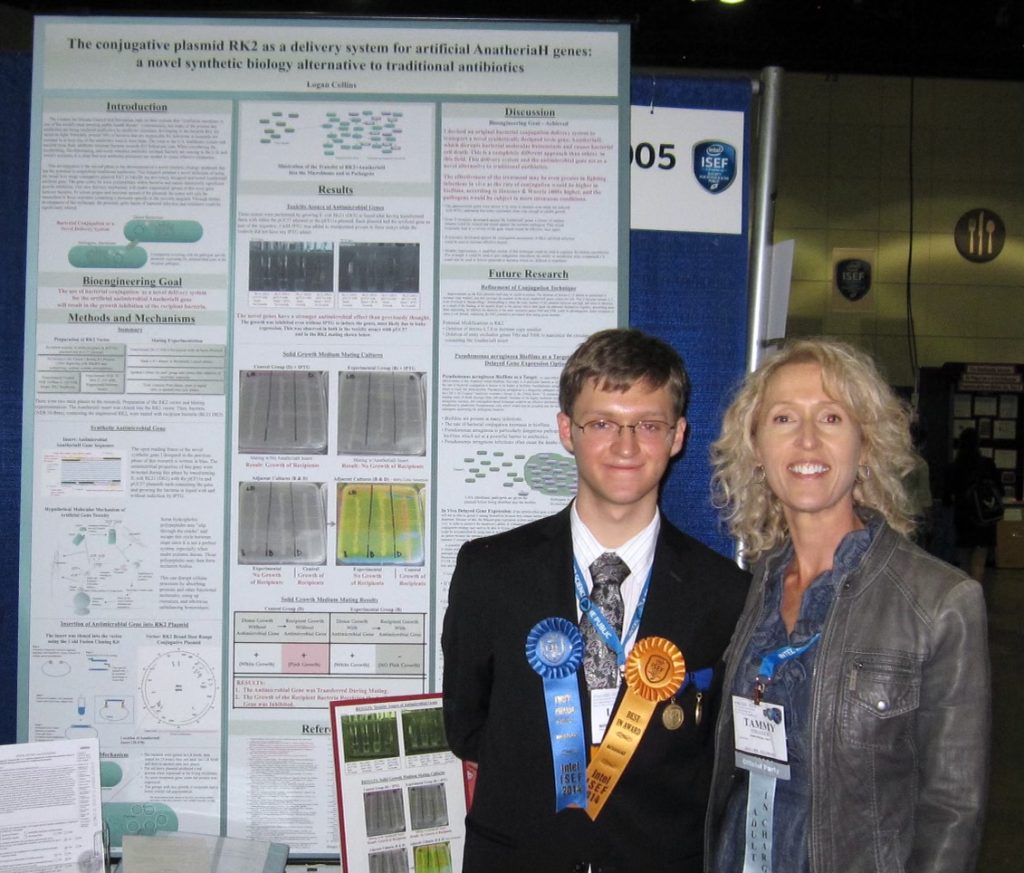
“At ISEF he also received an award to attend the Nobel Prize ceremony in Stockholm, Sweden. He is now doing doctoral research at the University of Colorado, but it all started when high school Logan figured out a way to cause a bacterium to take in a plasmid that he designed that kept the bacteria busy making nonsense proteins, eventually killing them. It is a potential solution to antibiotic resistance! Doing research in high school supported by a class with other like-minded students gave him what he needed to find his passion and flourish.”
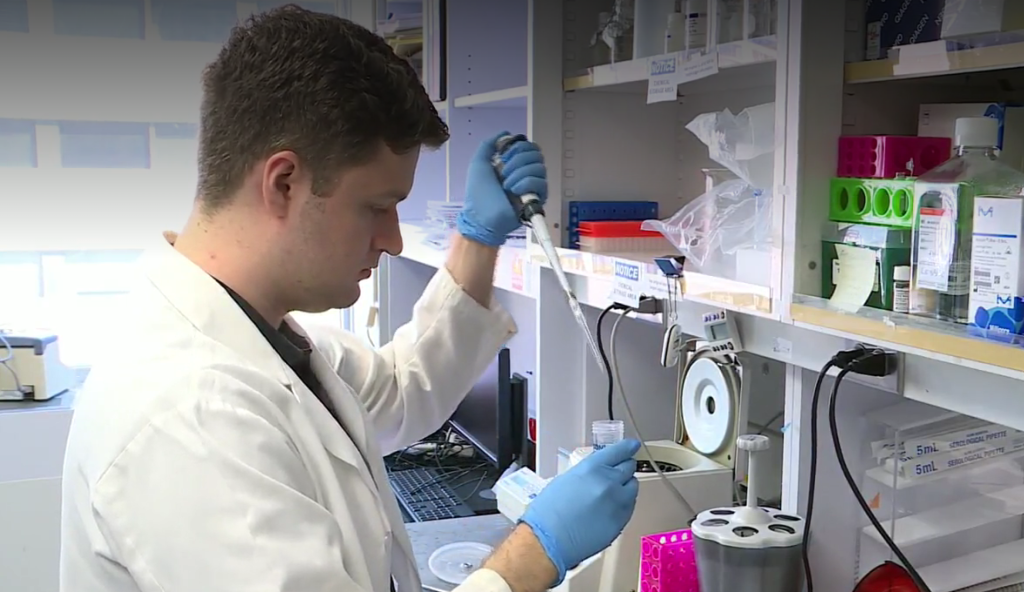
“Vanessa Haggans studied nutrient availability in tundra plants to determine if nutrients were limiting factors. She went on to Dartmouth College for a double major in economics and environmental science. She is now planning to take her science literacy and research skills to law school.” Vanessa recently returned to Fairview and presented her research to Paul’s students.
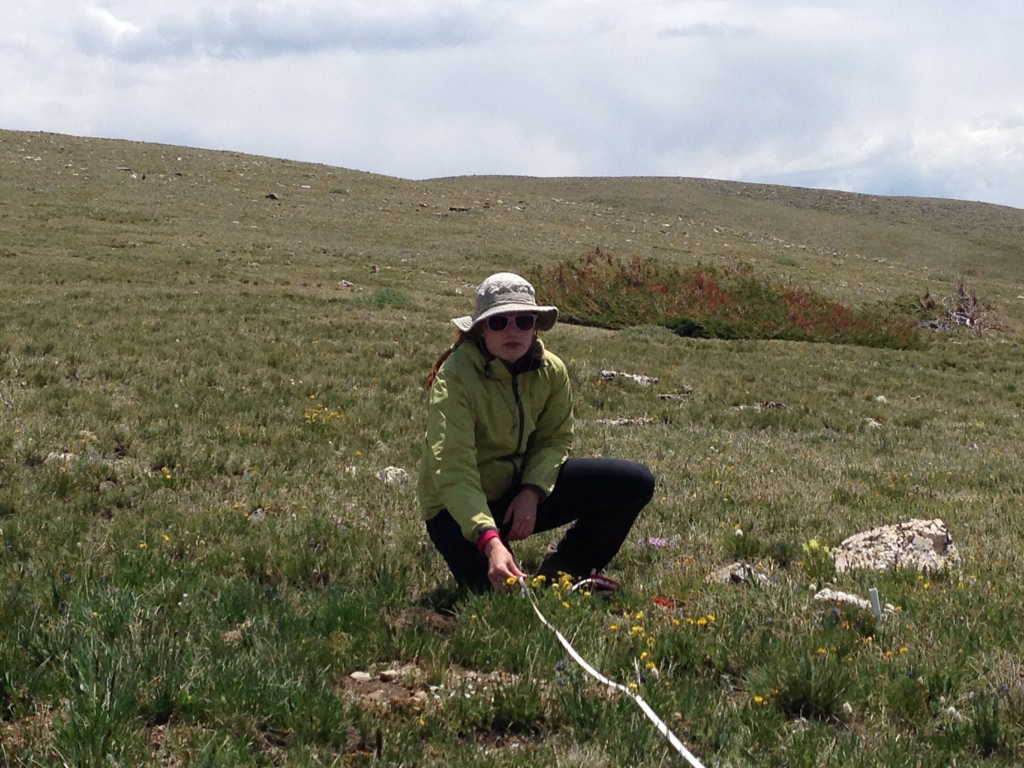
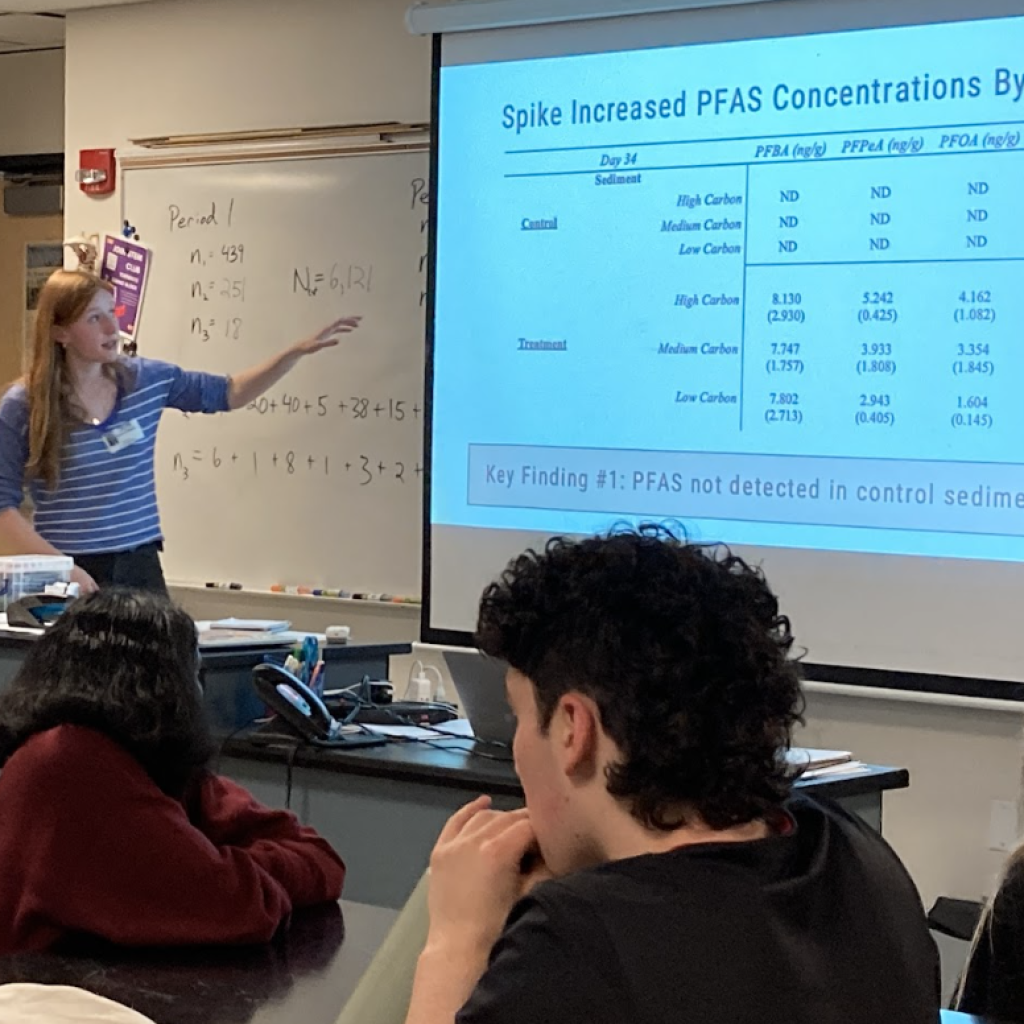
“Science is such a broad subject,” says current student, Zachariah Nagle, “that we never get to explore our niche interests. Dr. Strode changes all that!”
“Dr. Strode gives us support, helps us work through difficult material, and guides us so we have a clue how to do science,” adds Pragnya Pilli.
Imagine: How would the world be different if every student was at one time a researcher who learned how to think, talk, and write like a scientist?
If you are a student, how can YOU start a research project? If you are a researcher, what can YOU do to mentor a student? If you are a teacher, what can YOU do to develop lessons in your classroom to teach students how to think, talk, and write like scientists? It’s worth the effort!
Please visit Dr. Paul Strode’s amazing website at: https://fah.bvsd.org/about/staff/science/paul-strode
Find information about the Colorado Science and Engineering Fair here: https://csef.natsci.colostate.edu/
and the Regeneron International Science and Engineering Fair here: https://www.societyforscience.org/isef/
